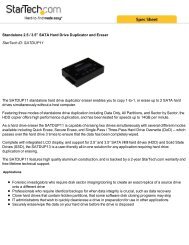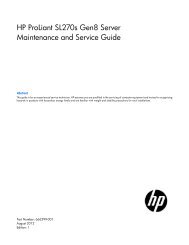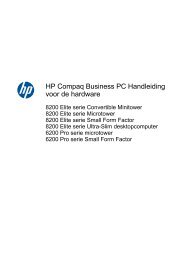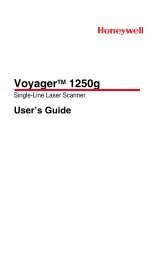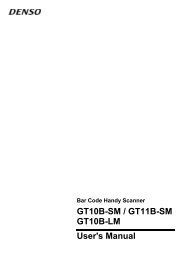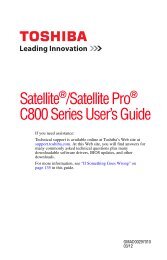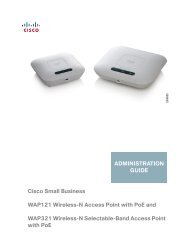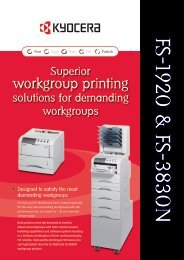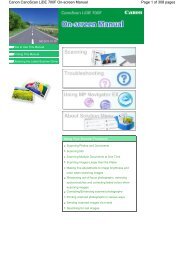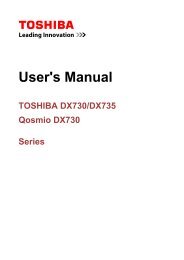User Manual - Etilize
User Manual - Etilize
User Manual - Etilize
You also want an ePaper? Increase the reach of your titles
YUMPU automatically turns print PDFs into web optimized ePapers that Google loves.
Particulate contamination<br />
Documentation format<br />
Some software might differ from its retail version (if available) and might not include<br />
user manuals or all program functionality.<br />
Attention: Airborne particulates (including metal flakes or particles) and reactive<br />
gases acting alone or in combination with other environmental factors such as<br />
humidity or temperature might pose a risk to the server that is described in this<br />
document. Risks that are posed by the presence of excessive particulate levels or<br />
concentrations of harmful gases include damage that might cause the server to<br />
malfunction or cease functioning altogether. This specification sets forth limits for<br />
particulates and gases that are intended to avoid such damage. The limits must not<br />
be viewed or used as definitive limits, because numerous other factors, such as<br />
temperature or moisture content of the air, can influence the impact of particulates<br />
or environmental corrosives and gaseous contaminant transfer. In the absence of<br />
specific limits that are set forth in this document, you must implement practices that<br />
maintain particulate and gas levels that are consistent with the protection of human<br />
health and safety. If IBM determines that the levels of particulates or gases in your<br />
environment have caused damage to the server, IBM may condition provision of<br />
repair or replacement of servers or parts on implementation of appropriate remedial<br />
measures to mitigate such environmental contamination. Implementation of such<br />
remedial measures is a customer responsibility.<br />
Table 15. Limits for particulates and gases<br />
Contaminant Limits<br />
Particulate v The room air must be continuously filtered with 40% atmospheric dust<br />
spot efficiency (MERV 9) according to ASHRAE Standard 52.2 1 .<br />
v Air that enters a data center must be filtered to 99.97% efficiency or<br />
greater, using high-efficiency particulate air (HEPA) filters that meet<br />
MIL-STD-282.<br />
v The deliquescent relative humidity of the particulate contamination<br />
must be more than 60% 2 .<br />
v The room must be free of conductive contamination such as zinc<br />
whiskers.<br />
Gaseous v Copper: Class G1 as per ANSI/ISA 71.04-1985 3<br />
v Silver: Corrosion rate of less than 300 Å in 30 days<br />
1 ASHRAE 52.2-2008 - Method of Testing General Ventilation Air-Cleaning Devices for<br />
Removal Efficiency by Particle Size. Atlanta: American Society of Heating, Refrigerating and<br />
Air-Conditioning Engineers, Inc.<br />
2 The deliquescent relative humidity of particulate contamination is the relative humidity at<br />
which the dust absorbs enough water to become wet and promote ionic conduction.<br />
3 ANSI/ISA-71.04-1985. Environmental conditions for process measurement and control<br />
systems: Airborne contaminants. Instrument Society of America, Research Triangle Park,<br />
North Carolina, U.S.A.<br />
The publications for this product are in Adobe Portable Document Format (PDF)<br />
and should be compliant with accessibility standards. If you experience difficulties<br />
when you use the PDF files and want to request a Web-based format or accessible<br />
PDF document for a publication, direct your mail to the following address:<br />
Information Development<br />
IBM Corporation<br />
205/A015<br />
Appendix B. Notices 89




